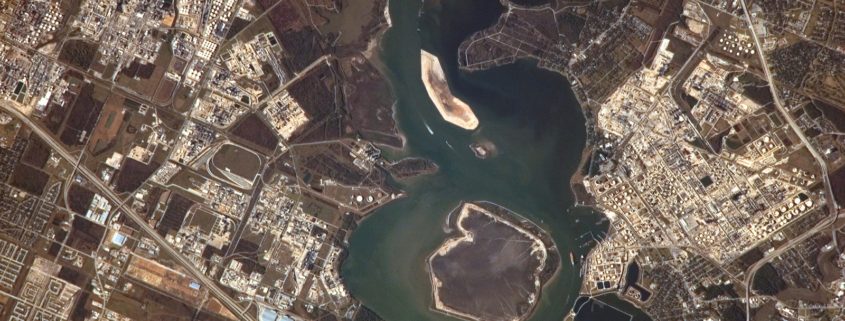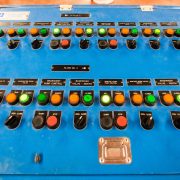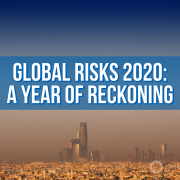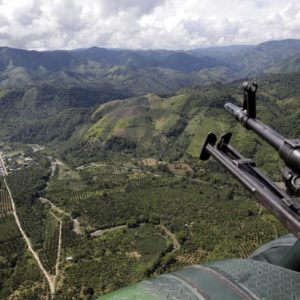EPA Cleanup Plan for Houston Superfund Site Opposed by Industry
The San Jacinto waste pits were flooded during Hurricane Harvey. EPA and industry differ on how to minimize contaminant risk.
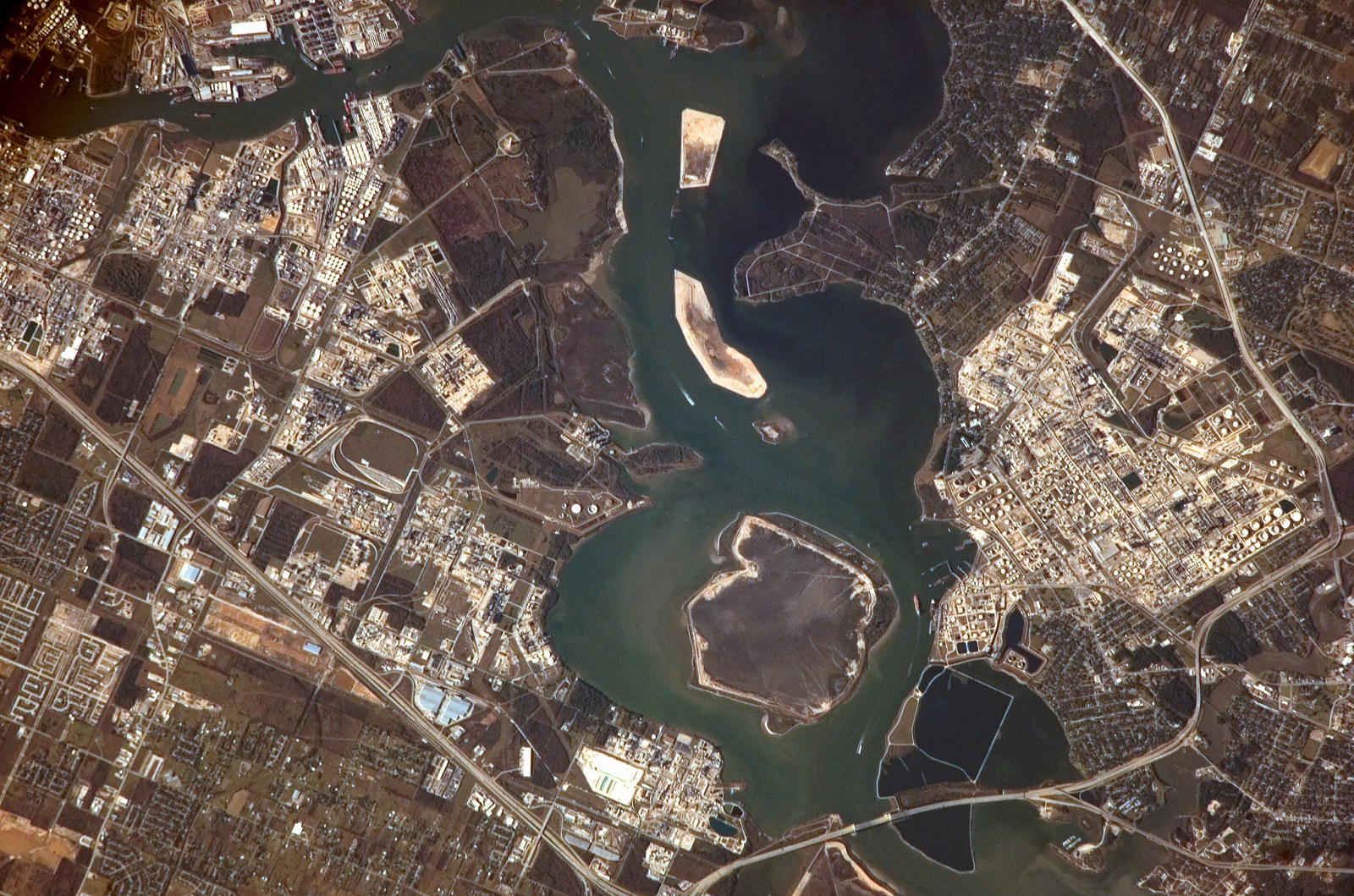
The San Jacinto River meets the Houston Ship Channel before entering Galveston Bay. The San Jacinto waste pits are just upstream. Photo courtesy of NASA Johnson
By Brett Walton, Circle of Blue
In a decision cheered by environmental and public health groups, the U.S. Environmental Protection Agency finalized a $115 million cleanup plan for the San Jacinto waste pits, one of the Houston-area Superfund sites that was flooded in August during Hurricane Harvey.
Local officials, according to the Houston Chronicle, called the recommendation for complete removal of soils that are contaminated with dioxin, a cancer-causing chemical that can take centuries to break down, the most important action that the EPA has taken in Harris County. Dioxin has been found in fish and crabs in the San Jacinto River and downstream in Galveston Bay, areas of commercial and recreational fishing.
EPA Administrator Scott Pruitt has said since taking office in February that Superfund cleanups are among his top priorities. Pruitt, in a May 22 memo, put himself in charge of major Superfund actions — those expected to cost $50 million or more. He visited the San Jacinto site in September and signed the record of decision. As one of his first major Superfund decisions, the San Jacinto waste pits will test Pruitt’s commitment to the program.
The agency’s plan for the 34-acre site faces hurdles. The two companies responsible for the cost of cleanup oppose the decision, preferring a cheaper option that leaves contaminated soils in place, wrapped in high-tech fabrics, covered with rock, and protected with steel pilings.
A dump for paper mill waste in the 1960s, the San Jacinto pits were named a Superfund site in 2008. When Hurricane Harvey inundated the Houston area with as much as 50 inches of rain, the resulting torrent of water damaged a temporary cap placed over the site, part of which extends into the San Jacinto River.
The EPA cleanup plan entails excavation and removal of 212,000 cubic yards of contaminated soils. Small, temporary dams will be built to redirect the river and dry out the work area. Most public comments supported this course of action, and the EPA says that complete removal is “the most effective in reducing the toxicity, mobility, and volume of waste compared to all of the other alternatives.”
The entities responsible for the cleanup costs are McGinnes Industrial Maintenance and International Paper. The EPA will now begin negotiating a settlement. After a mandatory 60-day negotiation period, the EPA can extend talks if the companies seem willing to work out a deal.
If no agreement can be reached, the EPA could order the companies to follow its plan and take legal action if they do not comply. Or, the agency could proceed with its cleanup plan and seek reimbursement from the companies.
Both companies oppose the EPA plan and prefer reinforcing the existing cap, a course of action that would cost less than half as much.
“International Paper respectfully disagrees with the decision by the EPA,” according to a statement the company sent to Circle of Blue. “The company is committed to protecting public health and the environment and we believe that remediation planning for the San Jacinto site must be rigorous, transparent and science-based and lead to engineering standards that will protect the river and the community.”
Modeling work done by the Army Corps of Engineers contradicts industry’s assessment. A major hurricane with flooding, storm surge and wind-driven waves would erode a reinforced cap, the Army Corps says. Rising seas and a “dynamic river environment” add to the risk of relying on a manmade structure, according to the EPA.
The temporary cap has already been damaged on multiple occasions. After Hurricane Harvey, EPA responders found that storm punctured the protective cap and caused chemical levels in the river to spike. Tests at one of 14 monitoring sites showed dioxin levels at 70,000 parts per trillion, more than 2,333 times higher than the site’s cleanup goal of 30 parts per trillion. The cap was reinforced with rock in early October.
The risks from flooding were foreseen. The EPA noted in a draft cleanup plan that the protective cap could be damaged by a large hurricane or severe storm.
“Because the intensity of future storms and flooding may increase, estimates regarding the ability of a cap (even a cap with increased armoring) to contain the dioxin waste material is highly uncertain,” the report stated.
Since the cap was installed in 2011, the EPA has documented at least eight instances of leaks or erosion.
The pits were built in 1965 in marshes adjacent to the San Jacinto River as a disposal site for pulp from Champion Paper Mill, located upstream in Pasadena, Texas. Because of large-scale groundwater pumping and dredging sand from river banks, land in the area sank in the following decades. Berms that contained the pulp wastes collapsed and partially submerged the site in the river.
Brett writes about agriculture, energy, infrastructure, and the politics and economics of water in the United States. He also writes the Federal Water Tap, Circle of Blue’s weekly digest of U.S. government water news. He is the winner of two Society of Environmental Journalists reporting awards, one of the top honors in American environmental journalism: first place for explanatory reporting for a series on septic system pollution in the United States(2016) and third place for beat reporting in a small market (2014). He received the Sierra Club’s Distinguished Service Award in 2018. Brett lives in Seattle, where he hikes the mountains and bakes pies. Contact Brett Walton

